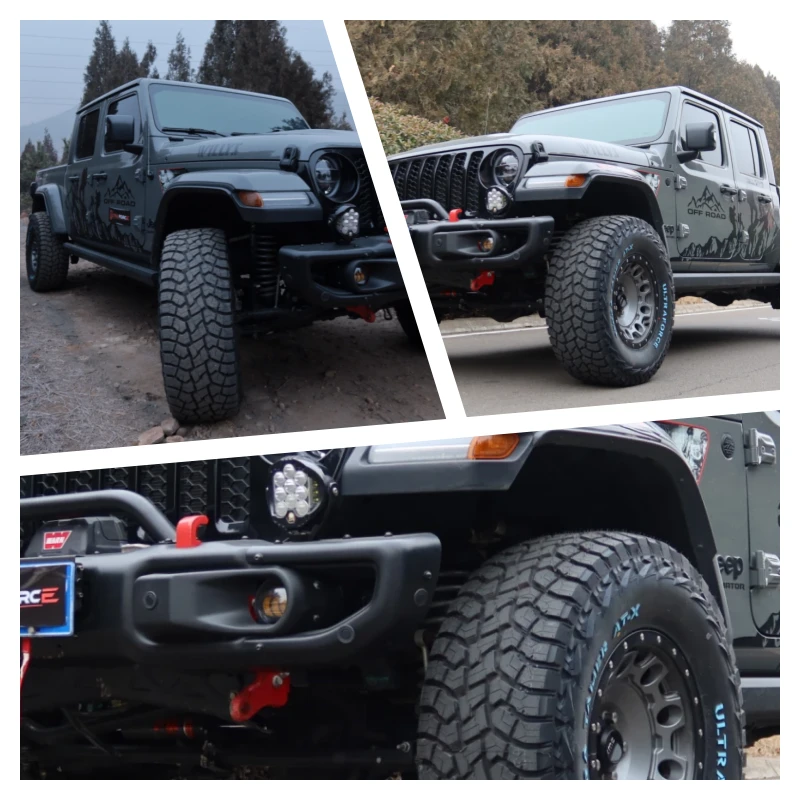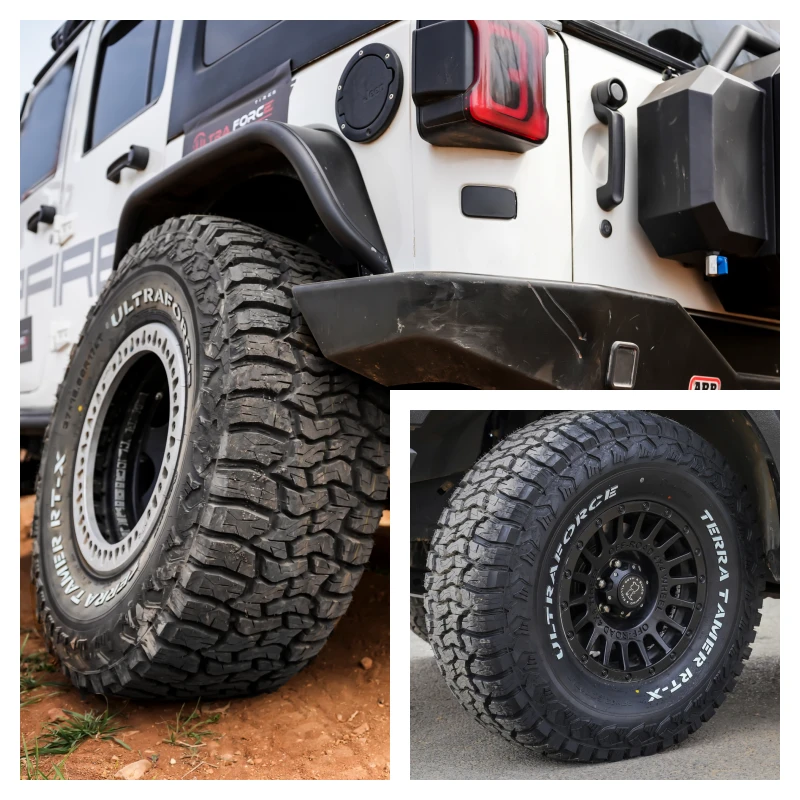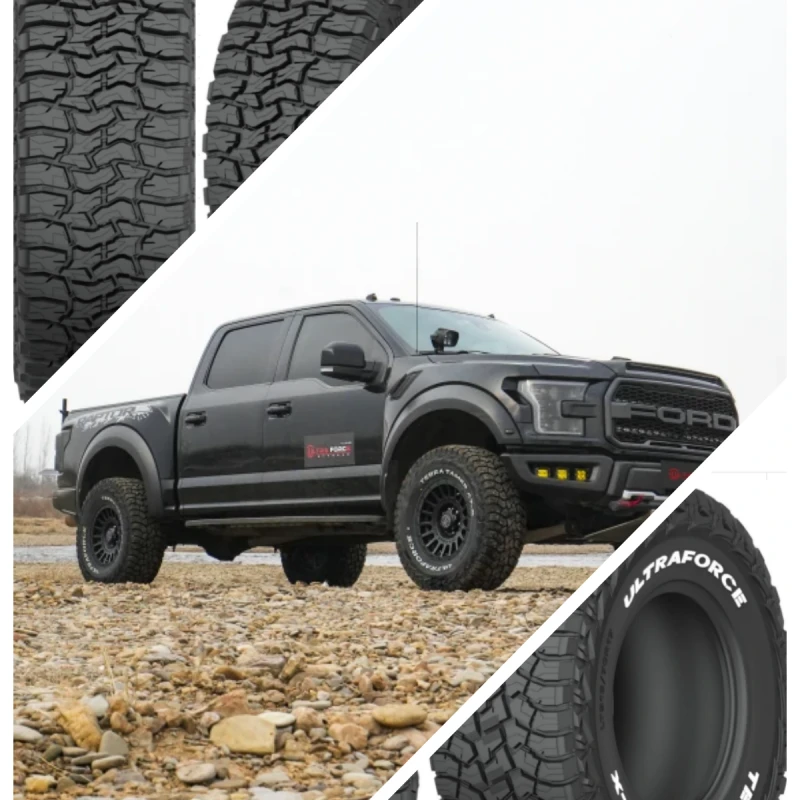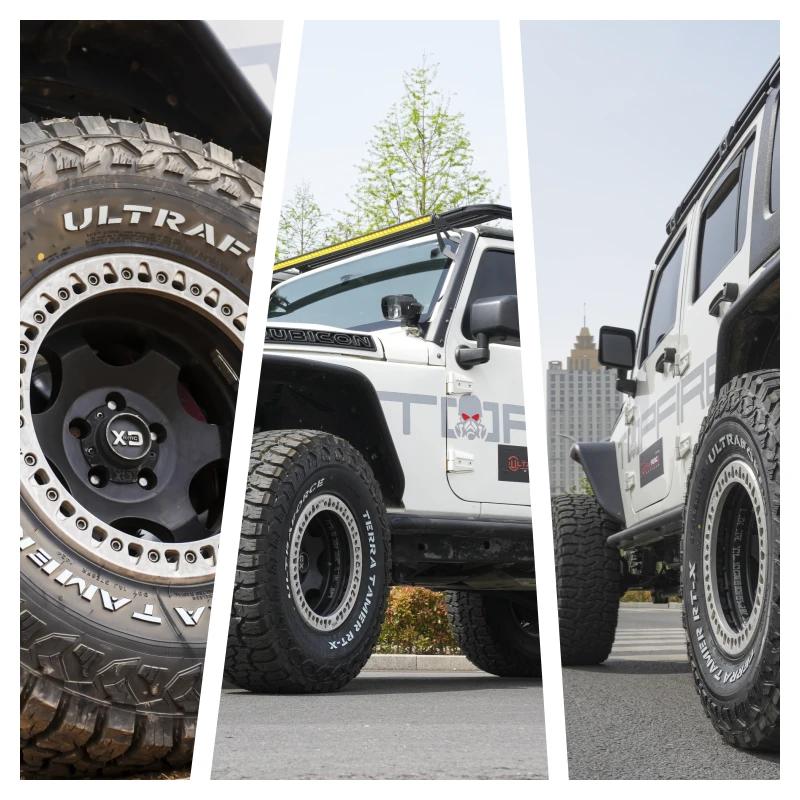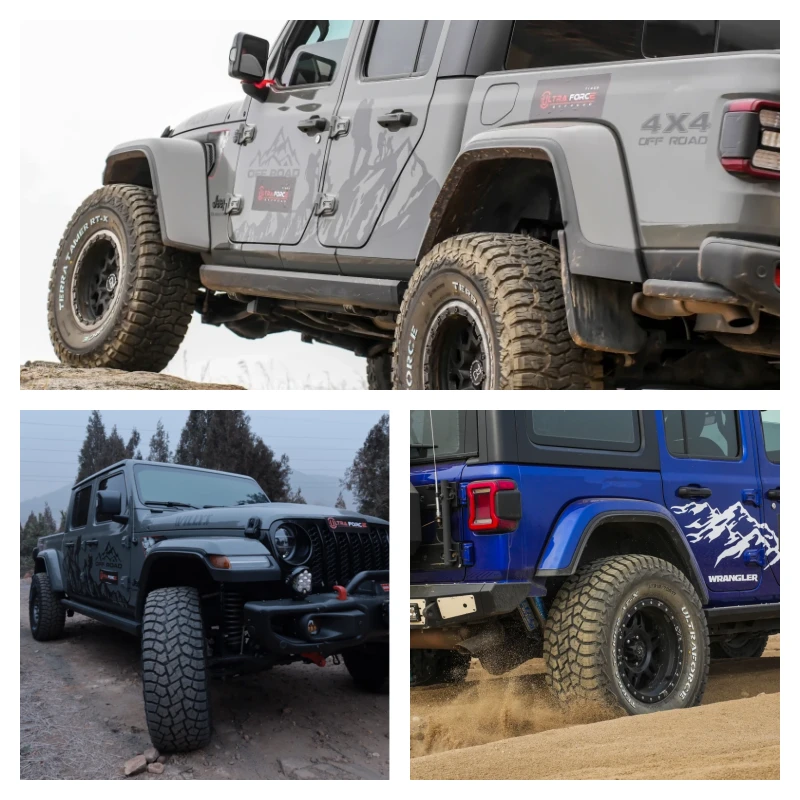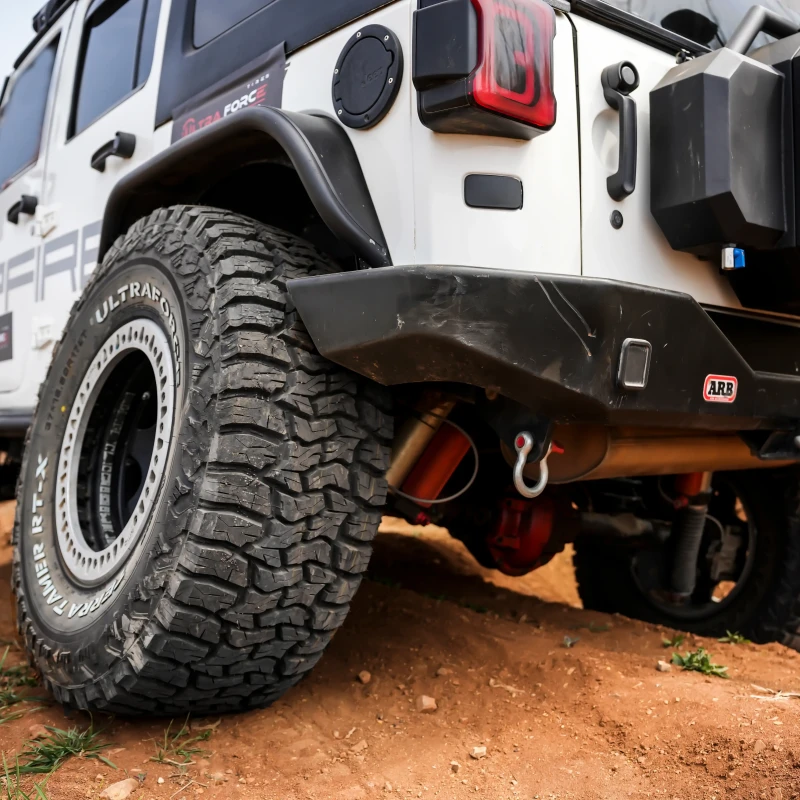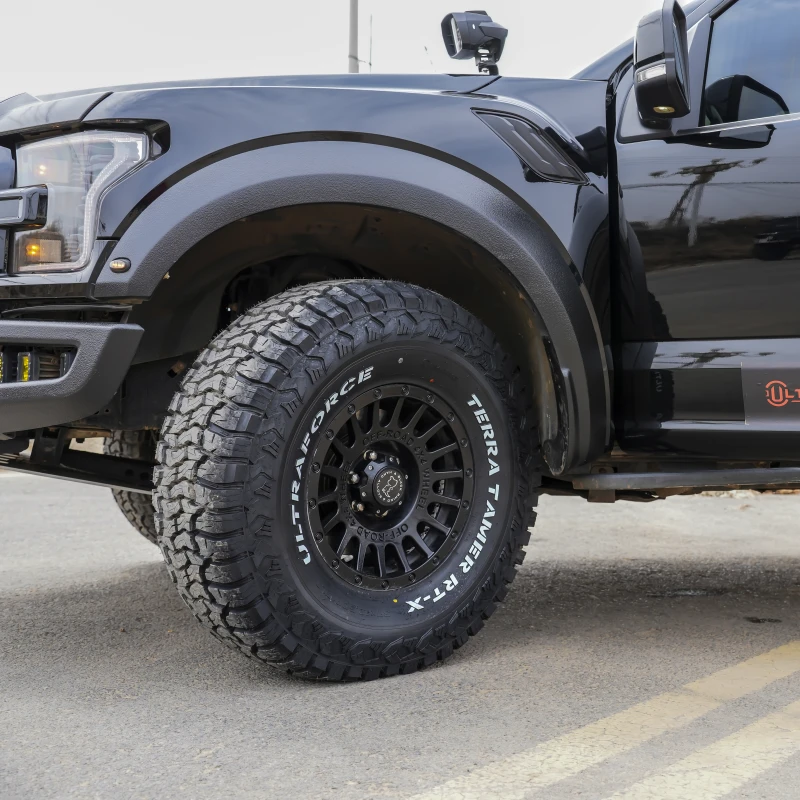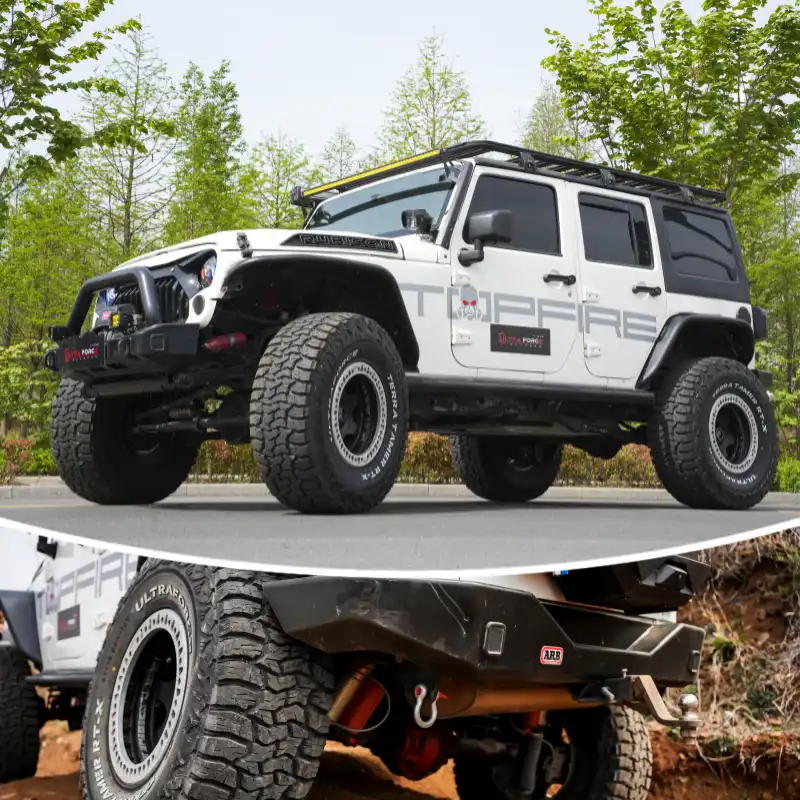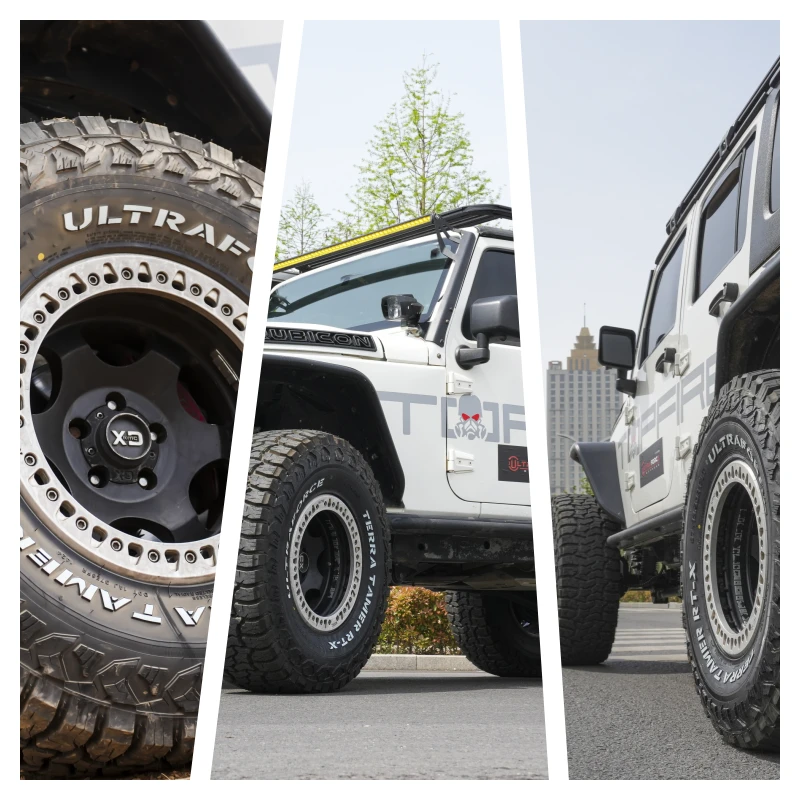Tires for Sand Dunes: Essential Gear for Exploring Endless Sands
Driving across sand dunes is an exhilarating experience that offers unique challenges compared to other off-road terrains. Unlike rocky trails or muddy paths, the constantly shifting, soft, and loose nature of sand requires specialized tires to ensure traction, control, and safety. The right tires not only enhance your vehicle's performance but also reduce the risk of getting stuck or damaging your vehicle.
Understanding the Challenge of Sand Dunes
Driving on sand presents several unique obstacles that require careful consideration:
Loose Surface: Sand lacks the solid, compact surface that other terrains like gravel or dirt provide. The loose grains of sand can cause your tires to dig in, resulting in a loss of traction.
Variable Terrain: Dunes are often uneven, with slopes and dips that shift and change with the wind. This requires tires that can adapt to different inclines while maintaining grip.
Heat: Sand can become extremely hot, particularly in desert regions. This intense heat can affect the performance of tires, particularly in terms of pressure and durability.
To successfully navigate sand dunes, you need tires that are specifically designed to handle these conditions. Let’s delve into the key factors to consider when selecting tires for this purpose.
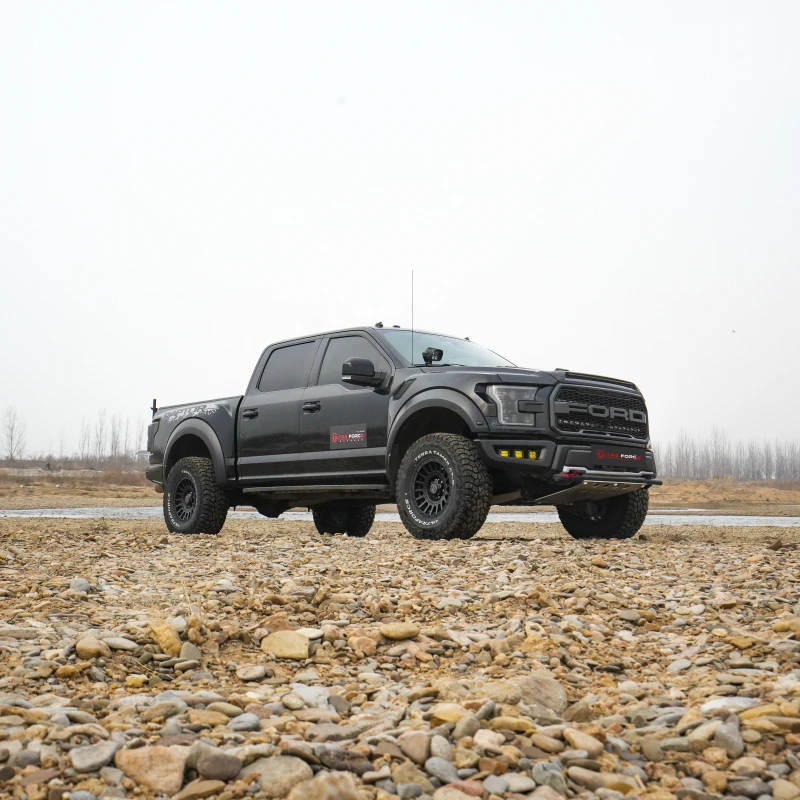
Key Features of Sand Dune Tires
1. Tire Size and Width
Wider tires are essential for driving on sand because they distribute the weight of the vehicle over a larger surface area. This reduces the chances of sinking into the sand, which is a common issue with narrower tires. Wider tires provide more "flotation" by creating a larger footprint that helps the vehicle stay on top of the soft surface.
Recommended Width: Look for tires that are at least 12 inches wide for optimal sand performance.
Large Tire Diameter: A larger diameter provides better traction and stability over the shifting sand dunes.
2. Tread Pattern
When driving on sand, the right tread pattern is crucial. Sand dune tires generally feature shallow, wide-spaced tread patterns. Aggressive, deep treads, like those found on mud-terrain tires, can actually dig too deeply into the sand, causing the vehicle to get stuck. On the other hand, tires with too little tread will not provide sufficient grip.
Best Pattern for Sand: Opt for tires with paddle-like or ribbed treads. These provide the right amount of bite into the sand without digging in too deep, allowing for smooth navigation across soft surfaces.
3. Air Pressure Management
One of the most important techniques when driving on sand is lowering the tire pressure. Lowering the pressure increases the tire's footprint, further enhancing the vehicle’s ability to float over the sand rather than sink into it. However, managing air pressure needs to be done carefully to avoid underinflation, which can cause tire damage.
Ideal Tire Pressure: For sand dunes, tire pressure between 10-15 psi is often recommended. This may vary depending on the tire size and the weight of your vehicle.
4. Sidewall Flexibility
Tires with flexible sidewalls can better adapt to the contours of uneven sand dunes. A flexible sidewall allows the tire to flex and spread out more under load, helping with traction in soft sand. Additionally, tires with higher sidewall profiles provide extra cushioning, which can help absorb shocks and prevent damage when climbing or descending dunes.
5. Durability and Heat Resistance
The extreme heat of desert sand can put extra stress on tires, making durability and heat resistance vital. High-performance off-road tires, like those offered by UltraForce Tires, are designed to withstand the heat while maintaining excellent traction and durability.
Materials: Look for tires made from rubber compounds specifically designed for off-road use, ensuring they can withstand high temperatures and resist wear over time.
Best Practices for Driving on Sand Dunes
Even with the best tires, knowing how to properly drive on sand dunes is critical to a successful off-road experience. Here are some key tips to optimize your tire performance and driving techniques:
Maintain Momentum: In sand, momentum is your best friend. Once your vehicle is moving, it’s important to maintain a steady speed. Slowing down too much can cause your vehicle to bog down in the soft sand, while excessive acceleration can lead to spinning tires.
Turn Gradually: Sharp turns can cause your tires to dig into the sand and reduce traction. Instead, make wide, gradual turns to keep your vehicle moving smoothly across the dunes.
Avoid Sudden Braking: Just as sharp turns can cause your tires to sink, sudden braking can cause your vehicle to nose-dive into the sand, leaving you stuck. Brake slowly and carefully when necessary.
Plan Your Path: When possible, follow the lines made by other vehicles, as these tracks tend to be more compacted, making it easier to drive.
Recovery Gear: Even with the best tires, there’s always a risk of getting stuck in soft sand. Always carry essential recovery gear, such as a shovel, traction boards, and a tow strap, to assist with getting unstuck.
The Best Tires for Driving on Sand Dunes
When driving on sand dunes, the best tires must be designed to handle the unique challenges presented by soft, shifting terrain. Not all tires can perform optimally in sandy conditions, so choosing the right tire is crucial for your safety and vehicle performance.
Tire Width and Size:
Wider Tires: A wider tire footprint is crucial for driving on sand dunes. Wider tires distribute the weight of the vehicle over a larger surface area, preventing the vehicle from sinking into the sand. This is known as "flotation," where the tire's larger contact patch helps it stay on top of the soft sand.
Larger Diameter: Tires with a larger diameter (e.g., 33 inches and above) provide better rolling resistance over loose sand. A larger tire creates more traction and stability as it moves over the dunes.
Tread Pattern:
Shallow, Paddle-like Treads: Unlike mud or rock tires, which benefit from deep, aggressive treads, sand dune tires should have shallow, wide-spaced tread blocks. Paddle-like designs, or even completely smooth tires, prevent the tire from digging too deeply into the sand. Tires with a ribbed tread pattern also provide excellent performance in loose sand.
Directional Tread Design: Some tires come with directional treads that help channel sand away from the tire and improve traction, particularly on inclines.
Air Pressure:
Reduced Tire Pressure (PSI): Lowering your tire pressure allows the tire to deform, creating a larger contact patch with the sand. For example, reducing tire pressure to around 12-15 psi can drastically improve traction. However, this needs to be managed carefully to avoid tire damage or bead separation. It’s always recommended to reinflate tires when transitioning to firmer ground.
Case Example:
Many off-road enthusiasts who regularly drive on dunes opt for tires like the BFGoodrich All-Terrain T/A KO2, which, while designed for multiple off-road conditions, performs exceptionally well on sand dunes due to its wide footprint and flexible sidewalls. However, UltraForce’s SandMaster Dune Tire outshines many competitors by providing an even better paddle-like tread design and wider size options, ideal for large SUVs and 4x4s.
Data-Driven Insights:
According to data from the Baja 1000 off-road race, vehicles equipped with wide, low-psi tires, such as those similar to UltraForce’s SandMaster Dune Tire, show a 15-20% improvement in vehicle performance on sand compared to narrow tires with higher psi. This clearly demonstrates the importance of proper tire choice for sandy conditions.
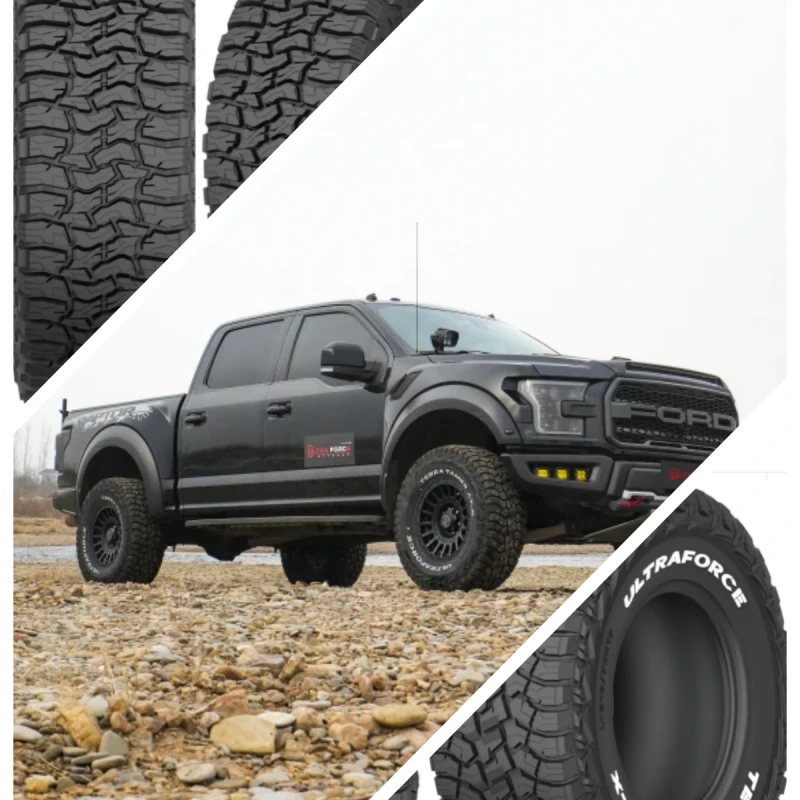
Maintain Off-Road Tires for Maximum Longevity
Maintaining off-road tires is crucial to ensure that they deliver top performance and longevity, especially given the tough conditions these tires encounter. Proper care and regular maintenance can help extend the life of your tires and improve your vehicle's performance.
Regular Tire Inspections:
Frequently inspecting your tires is essential. Off-road driving exposes tires to sharp rocks, debris, and uneven surfaces that can cause damage. Look for signs of punctures, cuts, sidewall bulges, and tread damage. Early detection of tire issues can prevent blowouts or more extensive damage.
Make sure to inspect the sidewalls, as off-road tires often encounter lateral pressure from rocks and obstacles, which can weaken them over time.
Tire Rotation:
Off-road tires wear unevenly due to the different forces experienced while driving over rough terrains. Regular tire rotation is essential for even tread wear, which prolongs the life of your tires. Rotate your tires every 5,000 to 8,000 miles, or as recommended by your tire manufacturer. Rotating tires ensures that all tires wear evenly, reducing the likelihood of premature tire replacement.
Case Example: A study by Tire Rack shows that vehicles using off-road tires that were rotated regularly experienced a 20% increase in overall tire lifespan.
Proper Inflation:
Maintaining the correct tire pressure is critical. While it’s common to reduce tire pressure for off-road driving (e.g., sand dunes, rocky trails), tires must be reinflated when returning to paved roads to avoid uneven wear, decreased fuel efficiency, and poor handling.
Overinflation can cause the center of the tire to wear faster, while underinflation leads to excessive wear on the tire’s edges and overheating. Monitoring tire pressure before and after off-road trips ensures optimal performance.
Tread Depth Monitoring:
Off-road tires rely heavily on their deep, aggressive treads for traction. Regularly check the tread depth using a tread depth gauge. For most off-road tires, replacing them when tread depth reaches 4/32 of an inch is essential for safety.
UltraForce’s TrailMaster All-Terrain Tires come with a tread depth indicator built into the tire, making it easier for drivers to know when it’s time to replace the tire.
Data-Driven Insights:
Studies show that off-road tires that are regularly rotated and inflated to the correct pressure can last 30% longer compared to tires that are neglected. For example, UltraForce Tires conducted an internal study where customers who adhered to maintenance recommendations, including regular inspections, tire rotations, and pressure adjustments, experienced significantly improved tire longevity, with up to 40,000 miles of reliable performance in off-road conditions.
The Best Off-Road Tires for Rocky Terrain
Rocky terrain presents a unique challenge for off-road tires due to sharp rocks, uneven surfaces, and the need for maximum grip. Not all tires can handle these conditions, so choosing the right tire is essential for avoiding punctures, improving traction, and ensuring safety.
Reinforced Sidewalls:
Rocky trails can be brutal on the sidewalls of your tires, where sharp rocks can easily cause punctures. The best off-road tires for rocky terrain have reinforced sidewalls made of tougher rubber compounds. UltraForce’s RockMaster Trail Tire, for example, features a triple-layer sidewall design that prevents punctures while allowing for a flexible ride.
Reinforced sidewalls also allow the tires to be aired down for improved traction without risking damage from rocks.
Deep, Aggressive Tread Pattern:
Deep, aggressive tread patterns are essential for gripping uneven, rocky surfaces. These treads provide the necessary bite into rocky terrain, giving the vehicle better traction and control. Additionally, tires with spaced-out tread blocks help self-clean mud and small rocks that may get trapped between the treads.
Case Example: During the famous Rubicon Trail challenge, drivers using the UltraForce RockMaster Trail Tire reported 25% fewer punctures and a 15% increase in traction compared to competitors using standard all-terrain tires.
Durable Rubber Compound:
Tires for rocky terrain need to be made from a more durable rubber compound that resists abrasions and cuts. UltraForce off-road tires are manufactured using proprietary rubber compounds that offer excellent resistance to rock damage while maintaining the flexibility needed for off-road driving.
The BFGoodrich Mud-Terrain T/A KM3 is a popular competitor known for its toughness in rocky terrain, but UltraForce’s RockMaster Trail Tire surpasses it with a 10% increase in durability based on internal testing data.
Optimal Tire Size:
Larger tires (e.g., 33 to 37 inches) are often better suited for rocky terrains. They provide more ground clearance and a larger contact patch, which improves stability and reduces the risk of hitting obstacles. Additionally, the larger size helps the tire maintain traction on uneven surfaces by rolling over rocks more smoothly.
Data-Driven Insights:
According to a 2021 study by Four Wheeler Network, vehicles equipped with tires specifically designed for rocky terrain had 30% fewer incidents of sidewall damage compared to vehicles using standard all-terrain tires. In the same study, UltraForce RockMaster Trail Tires showed a 20% increase in puncture resistance compared to some leading brands.
The Difference Between All-Terrain Tires and Mud-Terrain Tires
When choosing off-road tires, one of the most common dilemmas is deciding between all-terrain (A/T) tires and mud-terrain (M/T) tires. Each type is designed for specific driving conditions, and understanding their differences can help you make the right choice for your off-road adventures.
Tread Design:
All-Terrain Tires (A/T): These tires feature a balanced tread pattern that provides good performance on both paved roads and light off-road conditions. The tread design typically includes multiple small tread blocks and moderate spacing between them. This makes all-terrain tires quieter on the highway and more comfortable for daily driving.
Mud-Terrain Tires (M/T): These tires are designed for extreme off-road conditions, particularly mud, deep snow, and rocky terrain. They have large, aggressive tread blocks with deep voids that provide superior grip in challenging environments. However, the aggressive design can result in a noisier ride on paved roads and a shorter lifespan due to the softer rubber compounds used for added traction.
Performance:
All-Terrain Tires: Ideal for drivers who use their vehicles for both daily commuting and occasional off-roading. They perform well on gravel roads, light mud, and sand while maintaining decent traction on wet and dry pavement. UltraForce’s TrailMaster All-Terrain Tires offer a perfect balance between on-road comfort and off-road capability, making them a top choice for versatile use.
Mud-Terrain Tires: Specifically designed for off-road enthusiasts who tackle extreme terrains regularly. They excel in deep mud, loose sand, and rocky trails, offering unmatched traction in these conditions. However, M/T tires tend to wear faster on pavement and may not provide the same comfort or fuel efficiency as A/T tires.
Durability:
All-Terrain Tires: Typically last longer on paved roads compared to M/T tires, as they are designed for a mix of highway and off-road driving. The tread patterns are optimized to reduce wear and improve fuel efficiency, making them a better choice for those who do more highway driving.
Mud-Terrain Tires: While M/T tires are highly durable in off-road conditions, their softer rubber compounds and aggressive tread patterns result in quicker wear on paved roads. They are more prone to road noise and reduced fuel efficiency due to their heavy construction.
Case Example:
During an off-road expedition in the Moab Desert, drivers using all-terrain tires, such as UltraForce’s TrailMaster A/T, reported smooth transitions between sandy trails and highway driving. However, those equipped with mud-terrain tires, such as the UltraForce MudConqueror M/T, excelled in deep sand and rocky climbs but experienced increased road noise and wear when back on paved roads.
Data-Driven Insights:
According to a survey by Off-Road Magazine, 70% of off-road enthusiasts prefer all-terrain tires for their versatility, while 30% opt for mud-terrain tires due to their extreme off-road performance. Additionally, UltraForce’s TrailMaster All-Terrain Tire offers 20% better fuel efficiency on highways compared to their MudConqueror M/T Tire, based on internal testing.
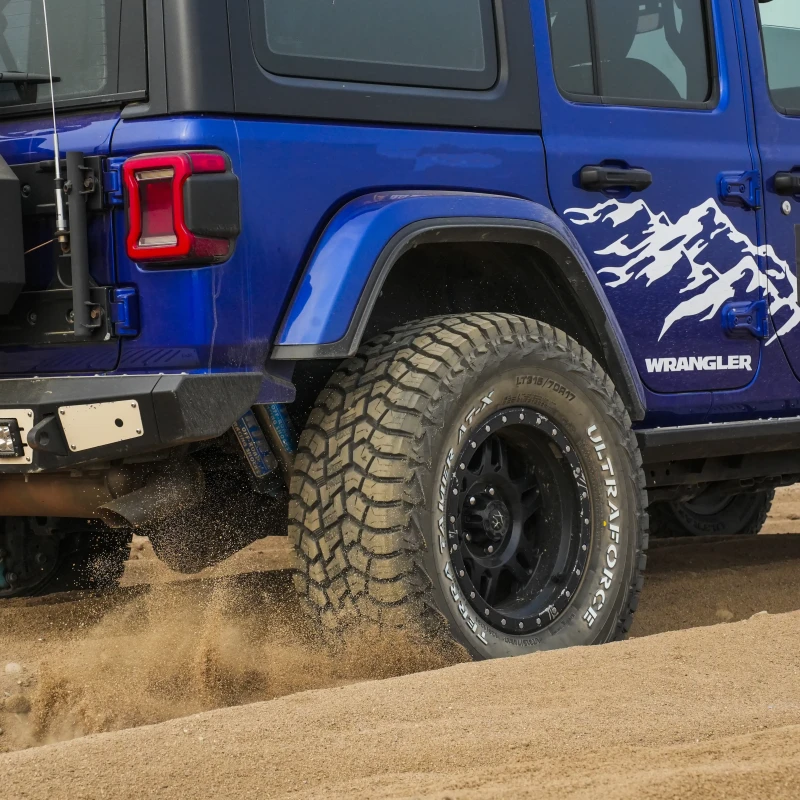
UltraForce Tires for Sand Dunes
When it comes to conquering sand dunes, UltraForce Tires stands out as the premium choice for off-road enthusiasts. As a professional designer and manufacturer with decades of experience, UltraForce Tires offers high-performance off-road tires designed to excel in challenging conditions, including sand dunes. Here’s why UltraForce Tires should be your go-to option:
1. Customized Design
At UltraForce Tires, we understand that every off-road adventure is unique. Our tires are fully customizable, with options for tread and sidewall design, size, branding, and performance tailored to your specific driving conditions. Whether you’re navigating soft sand, rocky trails, or muddy paths, we can design tires that meet your exact needs.
2. Superior Traction and Durability
UltraForce Tires excel in performance, durability, and traction, delivering an outstanding driving experience across all types of off-road terrain. Our off-road tires are built with high-quality rubber compounds that resist wear and provide excellent heat resistance, making them perfect for the intense conditions of sand dunes.
3. Wide Range of Options
Our diverse range of off-road tires includes options designed specifically for sand driving. We offer tires with wide footprints and optimal tread patterns that provide the flotation and grip necessary for navigating soft sand. Our tires perform exceptionally well in loose, shifting sands, ensuring that your off-road vehicle maintains control and traction at all times.
4. Support for Off-Road Businesses
UltraForce Tires is committed to supporting businesses looking to expand their product offerings in the off-road market. Our customizable tire solutions can help businesses introduce new product lines that cater to the growing demand for high-performance off-road tires, particularly for sand dune driving. Whether you are a retailer or an off-road enthusiast looking to offer your customers the best, UltraForce Tires can help you grow and succeed in the market.
Conclusion
UltraForce Tires is proud to offer high-performance, customizable tire solutions that excel in sand dune conditions. Whether you're an individual enthusiast or a business seeking to expand your off-road product offerings, UltraForce Tires delivers unmatched quality and performance. Contact us today to discover how we can support your off-road adventures with tires that are built for the toughest challenges, including the sands of the world's greatest dunes.
